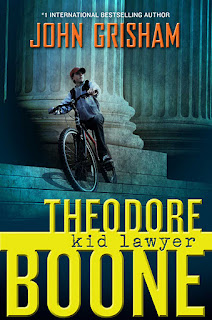The Cheshire Cheese Cat by Carmen Agra Deedy (Grade 5-8)
Skilley, a street cat with a secret (he eats cheese!), finds a home at Ye Olde Cheshire Cheese, where he pretends to be a mouser and gets the attention of Charles Dickens, a frequent customer. Befriended by Pip, a precocious mouse who can read and write, Skilley tries to protect his rodent pals and Maldwyn, an injured royal raven hiding in the garret, from Pinch, a ginger alley cat who s out for every tasty morsel he can get. There are cat-and-mouse battles aplenty. Several subplots are happily resolved: the cook reveals that the mice are her official cheese-tasters; Queen Victoria herself comes to rescue Maldwyn; Mr. Dickens finally finds an opening sentence for his new novel, and more. The fast-moving plot is a masterwork of intricate detail that will keep readers enthralled, and the characters are well-rounded and believable. ~School Library Journal
Everything On It by Shel Silverstein (Grades 3-6)
A spider lives inside my head
Who weaves a strange and wondrous web
Of silken threads and silver strings
To catch all sorts of flying things,
Like crumbs of thought and bits of smiles
And specks of dried-up tears,
And dust of dreams that catch and cling
For years and years and years . . .
Have you ever read a book with everything on it? Well, here it is, an amazing collection of never-before-published poems and drawings from the creator of Where the Sidewalk Ends, A Light in the Attic, and Falling Up. You will say Hi-ho for the toilet troll, get tongue-tied with Stick-a-Tongue-Out-Sid, play a highly unusual horn, and experience the joys of growing down. ~Amazon
Theodore Boone: The Abduction by John Grisham (Grades 4-6)
A perfect murder
A faceless witness
A lone courtroom champion knows the whole truth . . . and he’s only thirteen years old
Meet Theodore Boone
A faceless witness
A lone courtroom champion knows the whole truth . . . and he’s only thirteen years old
Meet Theodore Boone
In the small city of Strattenburg, there are many lawyers, and though he’s only thirteen years old, Theo Boone thinks he’s one of them. Theo knows every judge, policeman, court clerk—and a lot about the law. He dreams of being a great trial lawyer, of a life in the courtroom. But Theo finds himself in court much sooner than expected. Because he knows so much—maybe too much—he is suddenly dragged into the middle of a sensational murder trial. A cold-blooded killer is about to go free, and only Theo knows the truth. The stakes are high, but Theo won’t stop until justice is served. Brimming with the intrigue and suspense that made John Grisham a #1 international bestseller and the undisputed master of the legal thriller, Theodore Boone: Kid Lawyer will keep readers guessing and pages turning. ~Amazon
One Moon, Two Cats by Laura Godwin (Grades PreK-3)
Two cats are not asleep.
Across a great distance, but under the light of the same moon, a city cat and a country cat pounce and play, crouch and leap in a rollicking nighttime adventure. When morning comes, they are both back in their respective homes and finally, turn in to sleep. ~Amazon
The brief, rhymed text changes size to match the rhythms of the cats’ adventures, and the rich acrylic paintings create an air of nighttime mystery. An ably told and atmospheric romp. ~School Library Journal
Swirl by Swirl: Spirals in Nature by Joyce Sidman (Grades PreK-6)
A Caldecott medalist and a Newbery Honor-winning poet celebrate the beauty and value of spirals.What makes the tiny snail shell so beautiful? Why does that shape occur in nature over and over again—in rushing rivers, in a flower bud, even inside your ear? With simplicity and grace, Krommes and Sidman not only reveal the many spirals in nature—from fiddleheads to elephant tusks, from crashing waves to spiraling galaxies—but also celebrate the beauty and usefulness of this fascinating shape. ~Amazon
Squish Rabbit by Katherine Battersby (Grades PreK-3)
Squish is just a little rabbit. But being little can lead to big problems. Sometimes Squish is hard to hear . . . or see. (Which is how he got his name.) And no one notices him. But Squish notices things- especially when someone is about to get into trouble and needs help. Here is little Squish's BIG chance. ~Amazon
Blue Chicken by Deborah Freedman (Grades PreK-3) **Caldecott Contender!**
In this deceptively simple picture book, author-illustrator Deborah Freedman has created an irresistible character that springs to life and wreaks havoc in a farmyard with a pot of blue paint. The innocent chicken just wants to help, but things get worse and worse-and bluer and bluer--the more she tries. Playing with colors and perspective, and using minimal text, this richly layered story reveals new things to see and laugh about with each reading. ~Amazon
Full of surprise and emotion... The book has much to pore over on every page, and children will want to experience the action over and over again. ~ School Library Journal, starred review













